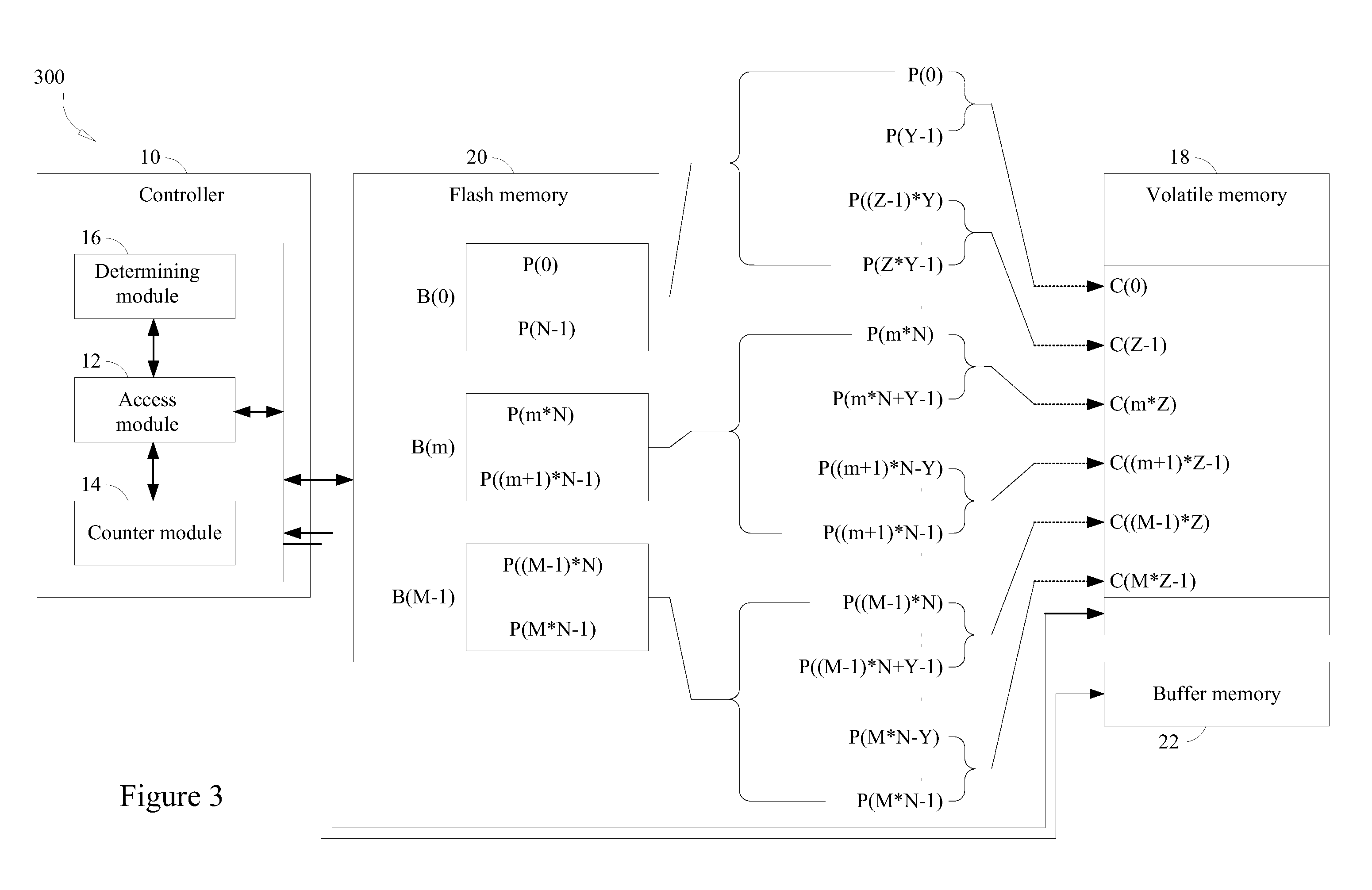Method for Flash Memory and Associated Controller
a technology which is applied in the field of flash memory and associated controller, can solve the problems of inability to store the charge the ability to lose partial charges of the floating gate, and the floating gate's ability to be undesirably affected, so as to increase the efficiency of the flash memory and reduce the number of read interferences
- Summary
- Abstract
- Description
- Claims
- Application Information
AI Technical Summary
Benefits of technology
Problems solved by technology
Method used
Image
Examples
Embodiment Construction
[0024]According to the present invention, data of a flash memory are maintained via appropriate data refreshments with respect to usage statuses (e.g., read instances of each data unit) of the flash memory to avoid negative effects of read interferences. The flash memory comprises M blocks, each comprising N data units (such as N pages), and each of the data units stores plural bits of data. In the flash memory, writing and erasure of data are performed solely in the unit of blocks. In fact, it is not allowed to erase or modify only a part of specific data units (such as pages) in a given data block of the flash memory. Thus, it is required that all the data in one block be erased prior to performing another data write-in into this same block. Therefore, embodiments of data refreshing of the present invention are performed in the unit of blocks.
[0025]FIG. 1 shows a flow chart 100 of data refreshment of the flash memory in accordance with an embodiment of the present invention. Steps...
PUM
 Login to View More
Login to View More Abstract
Description
Claims
Application Information
 Login to View More
Login to View More - R&D
- Intellectual Property
- Life Sciences
- Materials
- Tech Scout
- Unparalleled Data Quality
- Higher Quality Content
- 60% Fewer Hallucinations
Browse by: Latest US Patents, China's latest patents, Technical Efficacy Thesaurus, Application Domain, Technology Topic, Popular Technical Reports.
© 2025 PatSnap. All rights reserved.Legal|Privacy policy|Modern Slavery Act Transparency Statement|Sitemap|About US| Contact US: help@patsnap.com



